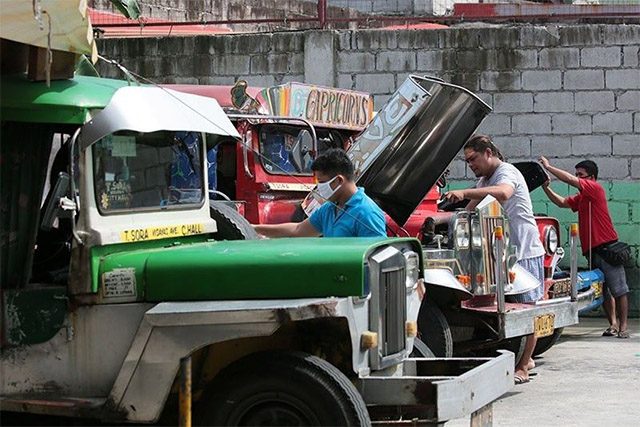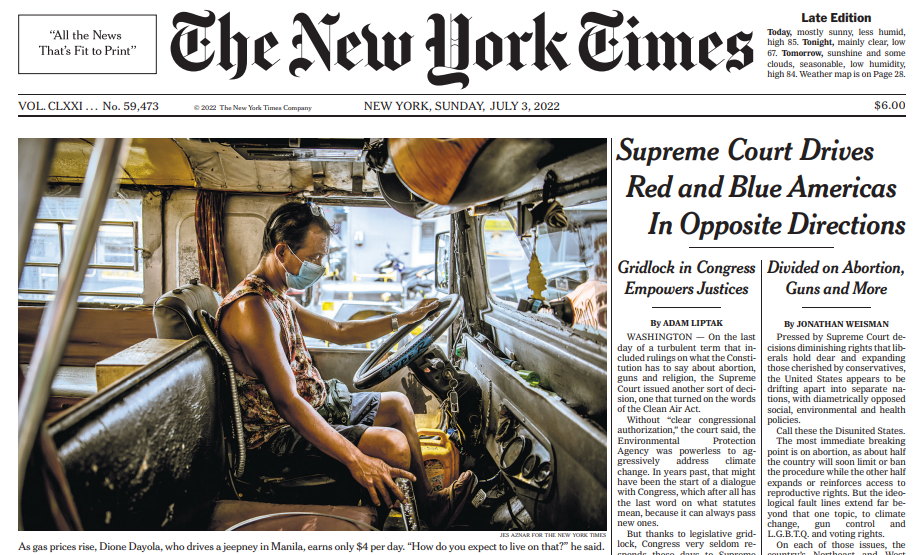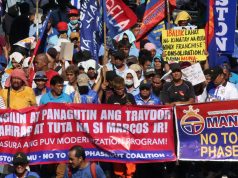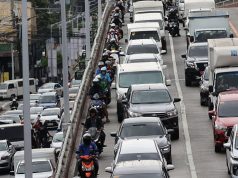
The impact of rising fuel costs on jeepney drivers in the Philippines made it to the front page of the New York Times’ July 3, 2022 issue.
This was after the publication featured a Filipino jeepney driver named Dione Dayola who is currently struggling amid the continued fuel price hike. His photo landed on the news publication’s front page, giving the Philippine transport sector’s concerns global attention.
The photo was captured by Manila-based documentary photographer Jes Aznar.
The caption reads: “As gas prices rise, Dione Dayola, who drives a jeepney in Manila, earns only $4 per day. ‘How do you expect to live on that?’ he said.”

One Facebook user noticed this and uploaded a copy of the paper on July 10.
“The Philippines made it to the front page of New York Times last week. Jeepney drivers earn $4/day, if at all,” the user said. $4 is equivalent to P223.94 based on the current Google exchange rate. ($1=P55.99)
Her post had so far garnered 10,000 reactions, 12 comments and 6,300 shares on the platform.
Dayola’s story was part of the NYT’s report that tackled how families and workers in different parts of the world bear the brunt of the soaring fuel prices.
The report titled “Skyrocketing global fuel prices threaten livelihoods and social stability” that was written by Patricia Cohen can be accessed on NYT’s website over a paywall.
In the report, Dayola shared that before the fuel price hikes, he would bring home around $15 or P839.79 a day. Nowadays, he only earns as much as $4 or P223.94.
“How do you expect to live on that?” he was quoted in the article as saying.
The report also made a brief explanation on how the ongoing conflict between Ukraine and Russia affects the Philippine oil market.
“The Philippines buys only a minuscule amount of oil from Russia. But the reality is that it doesn’t really matter whom you buy your oil from — the price is set on the global market,” the report said.
“Everyone is bidding against everyone else, and no country is insulated, including the United States, the world’s second largest oil producer after Saudi Arabia,” it added.
On July 1, the minimum fare for traditional jeepneys nationwide was raised to addressed the jeepney drivers’ concerns. Jeepney fare now costs P11 for traditional jeepneys and P13 for modernized jeepneys after the Land Transportation Franchising and Regulatory Board approved drivers’ petition to increase provisional fares by P2.
Transport groups have also been calling on the government to remove the excise tax on oil products to help them cope with their finances amid the still COVID-19 pandemic and economic crisis.









